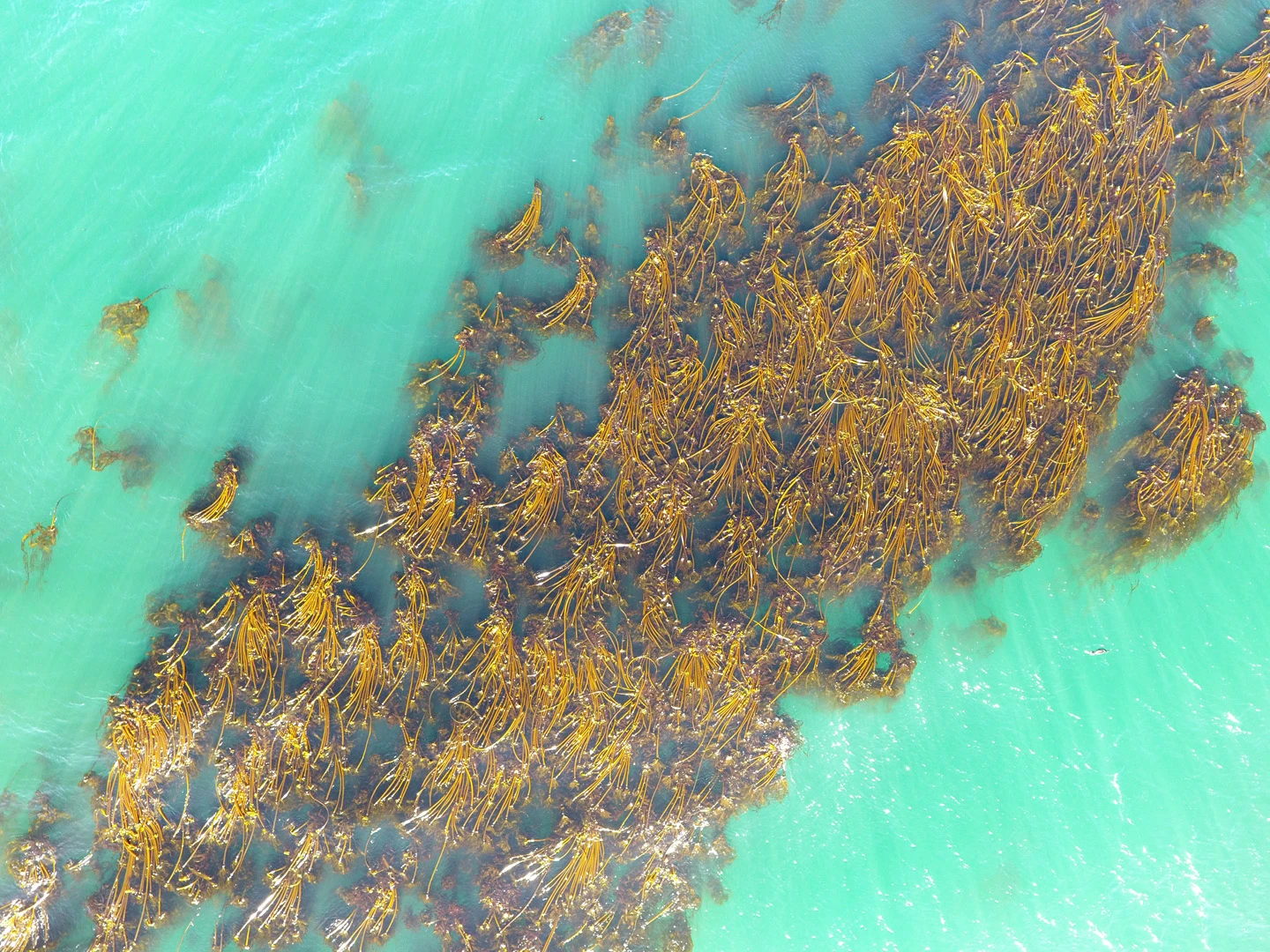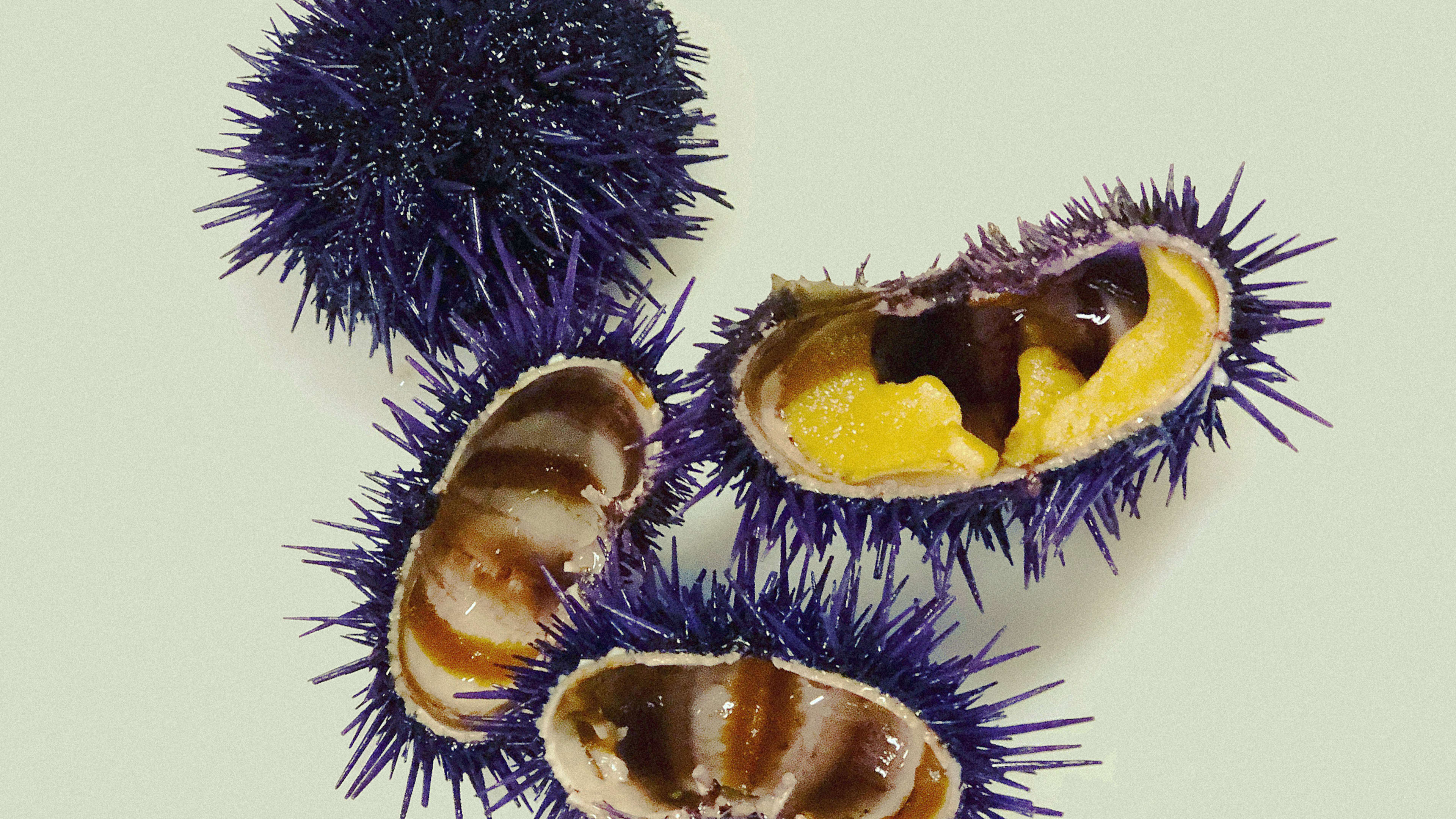Last week, scientists from the Nature Conservancy stood on a bluff overlooking the Pacific Ocean near Mendocino, California, watching a drone fly over the water as it mapped the disappearing kelp forests along the coast. Kelp—a type of seaweed that can help fight climate change by sequestering carbon and is critical to marine ecosystems—is dying in part because of an explosion of purple urchins in the area. As the Nature Conservancy maps the remaining kelp to find the best places to intervene, the organization plans to also work with a startup to test a new solution to the problem: harvesting the sea urchins to “ranch” them to make uni, a delicacy often used in sushi.

“Urchin ranching is part of a larger strategy to reset the ecosystem and prepare kelp to recover,” says Norah Eddy, the associate director of the oceans program at the Nature Conservancy. Around 90% of the kelp along California’s North Coast has been lost over the last decade. The kelp is sensitive to warming water and suffered when a marine heat wave began in the Pacific in 2013. Then a disease killed off sea stars, a predator of sea urchins, and the population of purple sea urchins exploded. The urchins feed on kelp, and even when they decimate a kelp forest and run out of food, they stick around, able to survive even as their food source disappears. If the kelp begins to grow back, they gobble it up again. The area is left as an “urchin barren,” a desert-like area where seaweed doesn’t grow.

Urchinomics, the startup that will work with the Nature Conservancy to ranch the sea urchins, first learned about the challenge that the species can pose in Japan after the 2011 tsunami. As Japanese fishermen rebuilt their homes and boats, they realized that there was nothing left to fish. “The tsunami washed away the predatory species for urchins, which allowed the urchins to explode 700%,” says Brian Tsuyoshi Takeda, the startup’s CEO. “When the urchin population exploded, it totally decimated one of the world’s most productive coastal ecosystems.”
The startup, based in Norway, realized that technology developed by the Norwegian government could help. Fish feed typically melts into the water more quickly than urchins eat, but the government created a new type of feed that made it possible to grow urchins in aquaculture. The company realized that it could harvest starving sea urchins from the water and raise them to produce uni, the edible part of the animal (technically, it’s a gonad, an organ that produces roe). The company got the rights to the technology and tweaked the ingredients to make them sustainable. “We developed, essentially, a new version of the feed that is super sustainable and can turn a pest urchin from an ecological problem to one of the world’s most premium seafoods on the planet in eight to 12 weeks,” he says.
Sea urchins are destroying kelp forests in many parts of the world. “What typically happens is that when you overfish predatory species—lobsters, crab, cod, herring, all the fish that typically taste good—and you don’t really take into consideration what happens to the rest of the ecosystem when those predators disappear and urchins explode in population,” Takeda says. The company is working to build its first commercial aquaculture systems for markets in Japan, Canada, Norway, and now California. “We are working on multiple properties in California because we realize that California is in a very critical situation,” he says.

Nonprofits partnering with the Nature Conservancy will harvest the sea urchins from the kelp beds and send them to the startup, and when the startup sells the food, it will send part of the proceeds back to the nonprofits to keep the project going. “The idea is that we want to get our donation amount high enough that the restoration effort becomes self-sustaining economically,” he says. “So that way, the more we profit, the better the ecosystem becomes.” Nonprofits can hire commercial divers to harvest the urchins, but the company wanted to work with nonprofits rather than directly with fishermen to ensure that the process was scientifically sound. (Fishermen, motivated by profit, might only remove the larger urchins, but removing the smaller urchins is also critical for the process to work.)

As a food, sea urchins are used not only in Japanese food, but also in French, Italian, and Spanish cuisines, among others. Takeda believes that more chefs will embrace uni as an ingredient when they have the option to buy it from a project that’s actively helping save an ecosystem. “I think by us being able to say that for every urchin that you use from our restorative initiative, you’re essentially helping to restore the kelp forest, that’s a whole new value proposition,” he says. “Because typically if seafood is considered sustainable, you’re still taking from the sea—just taking less, or it’s less bad than what it used to be. In this particular case, you are actually contributing to the betterment or the improvement of the ecosystem.”
Recognize your brand’s excellence by applying to this year’s Brands That Matter Awards before the early-rate deadline, May 3.
